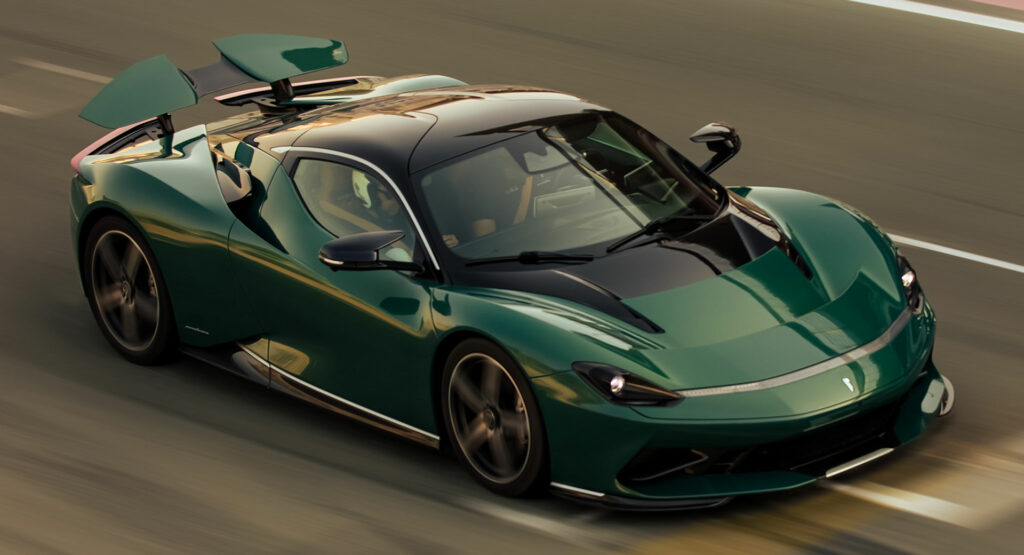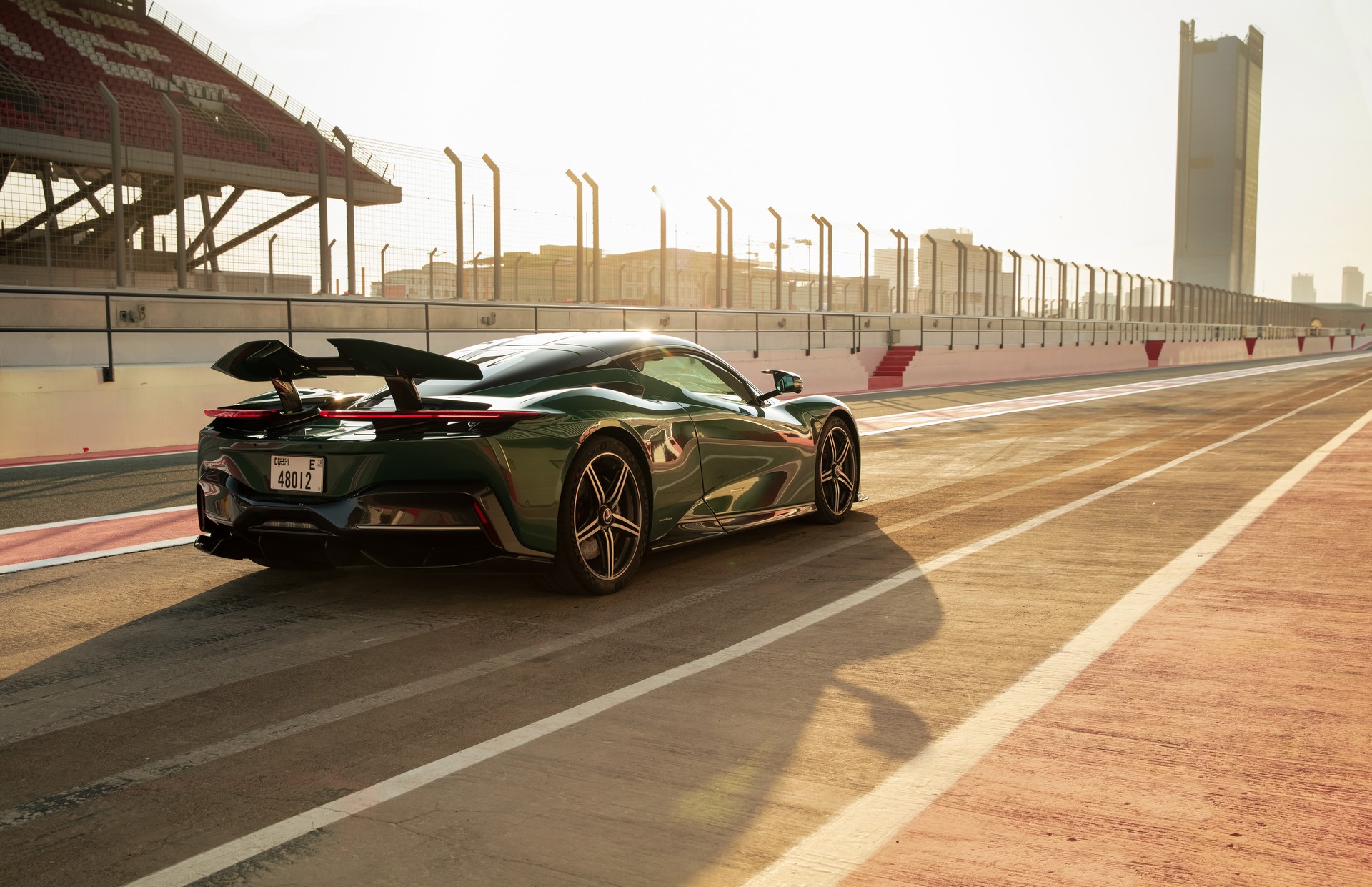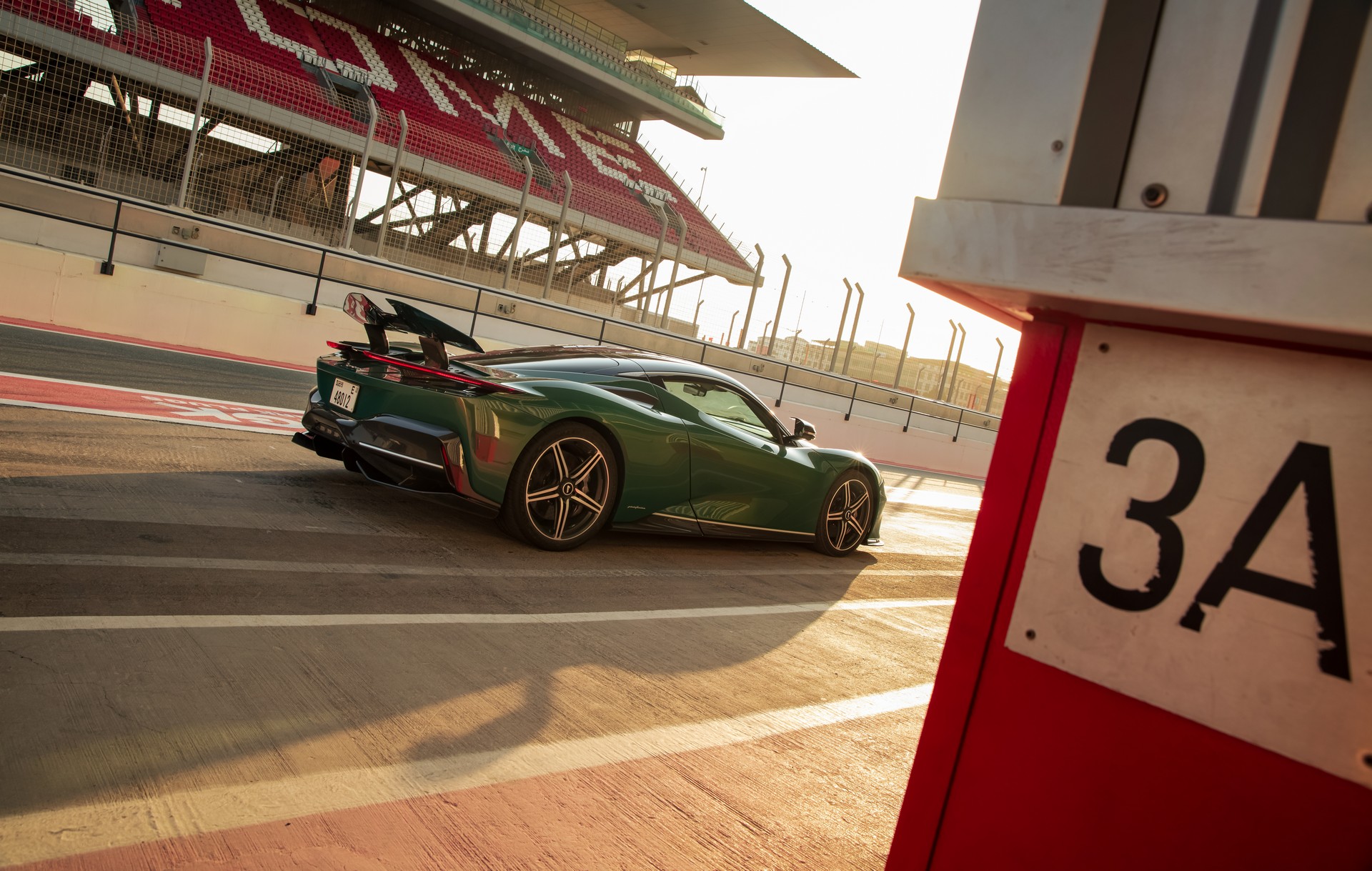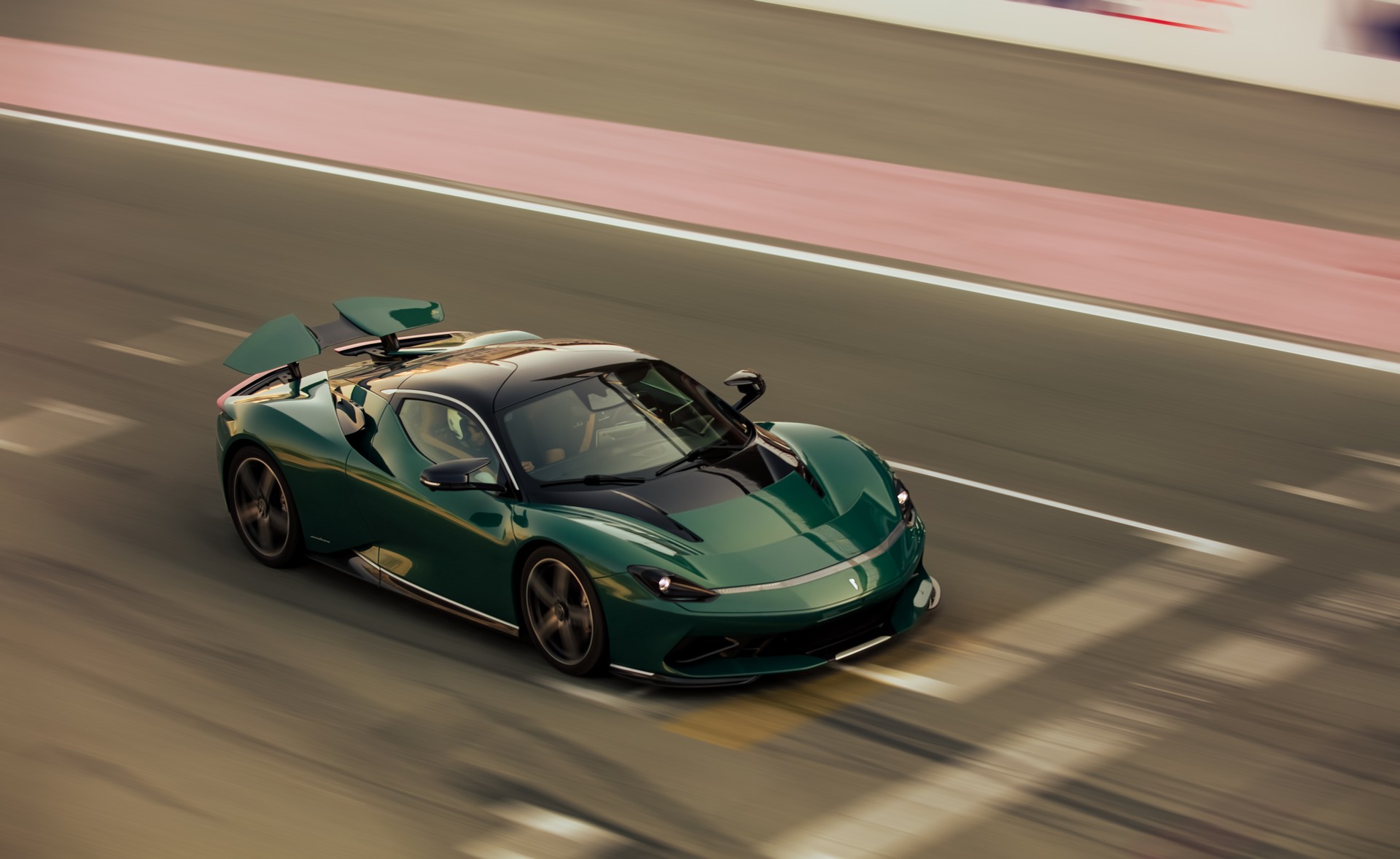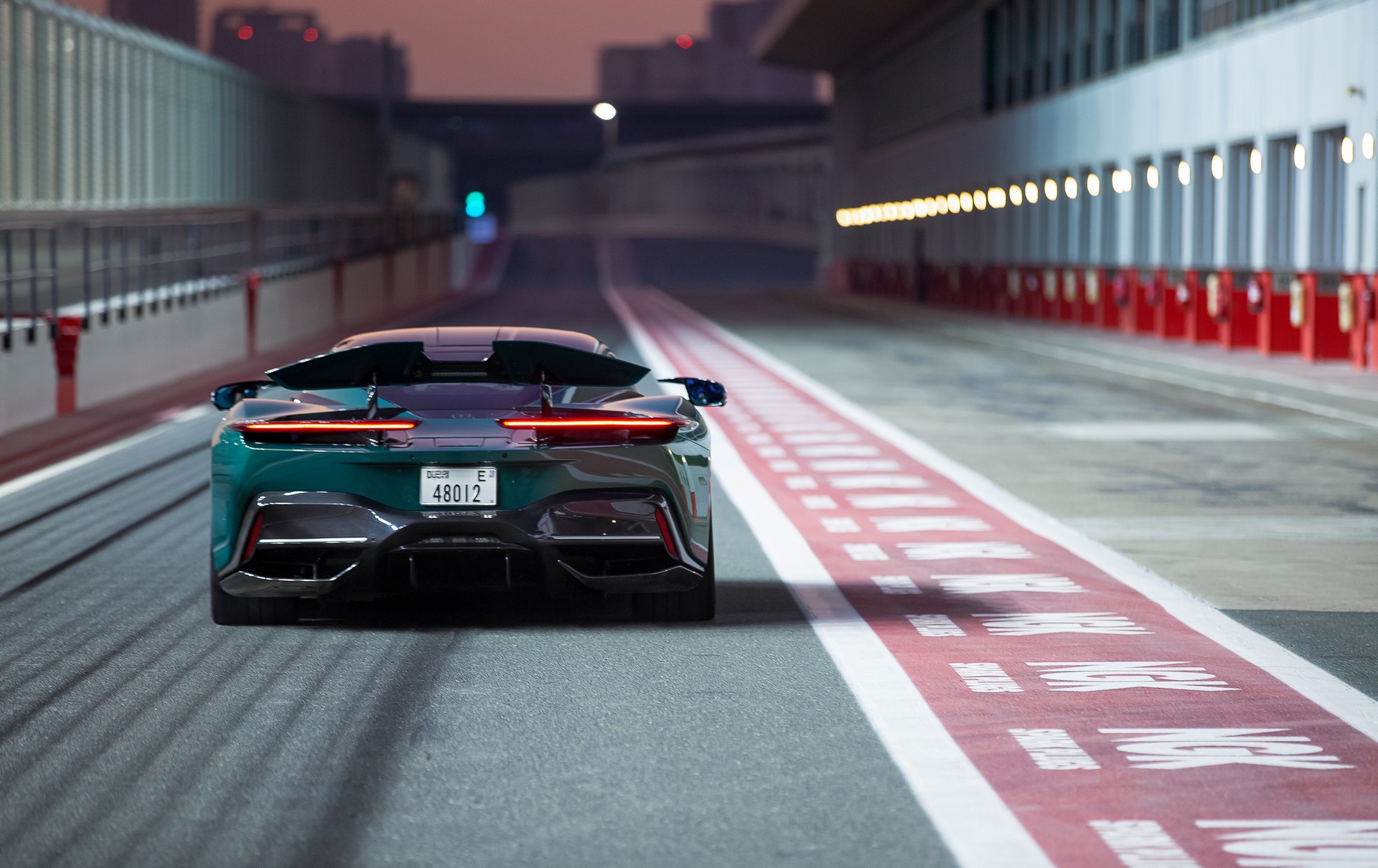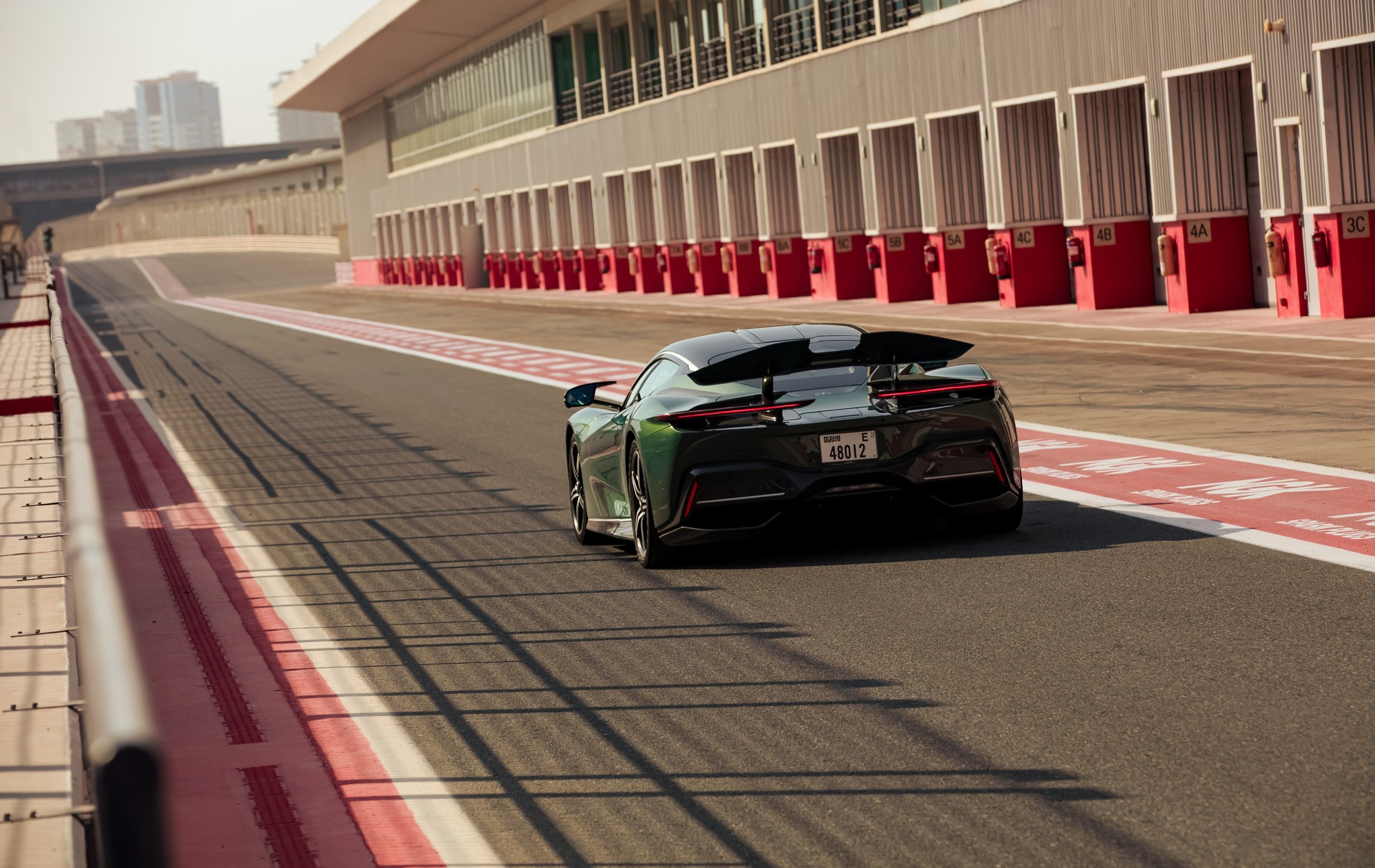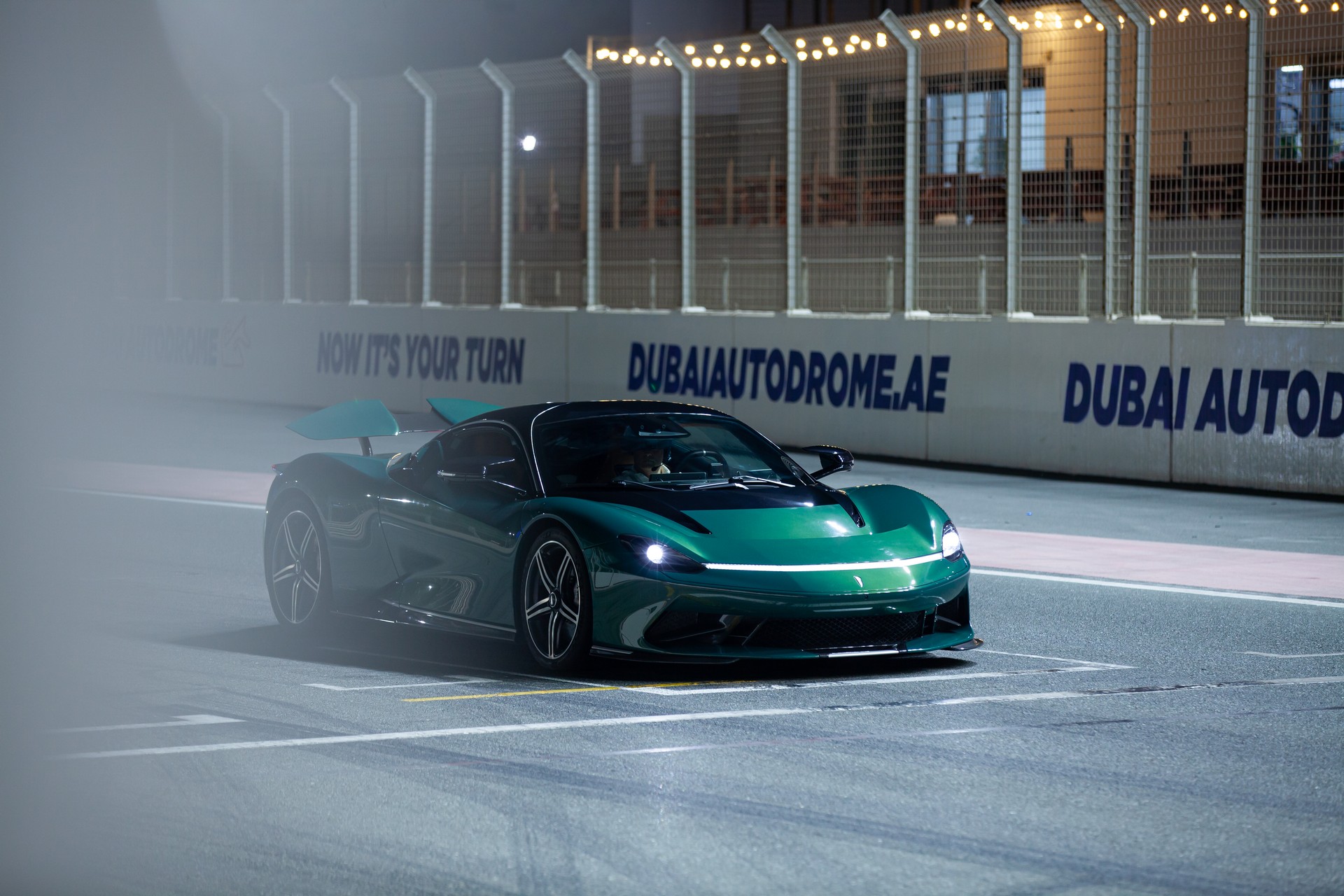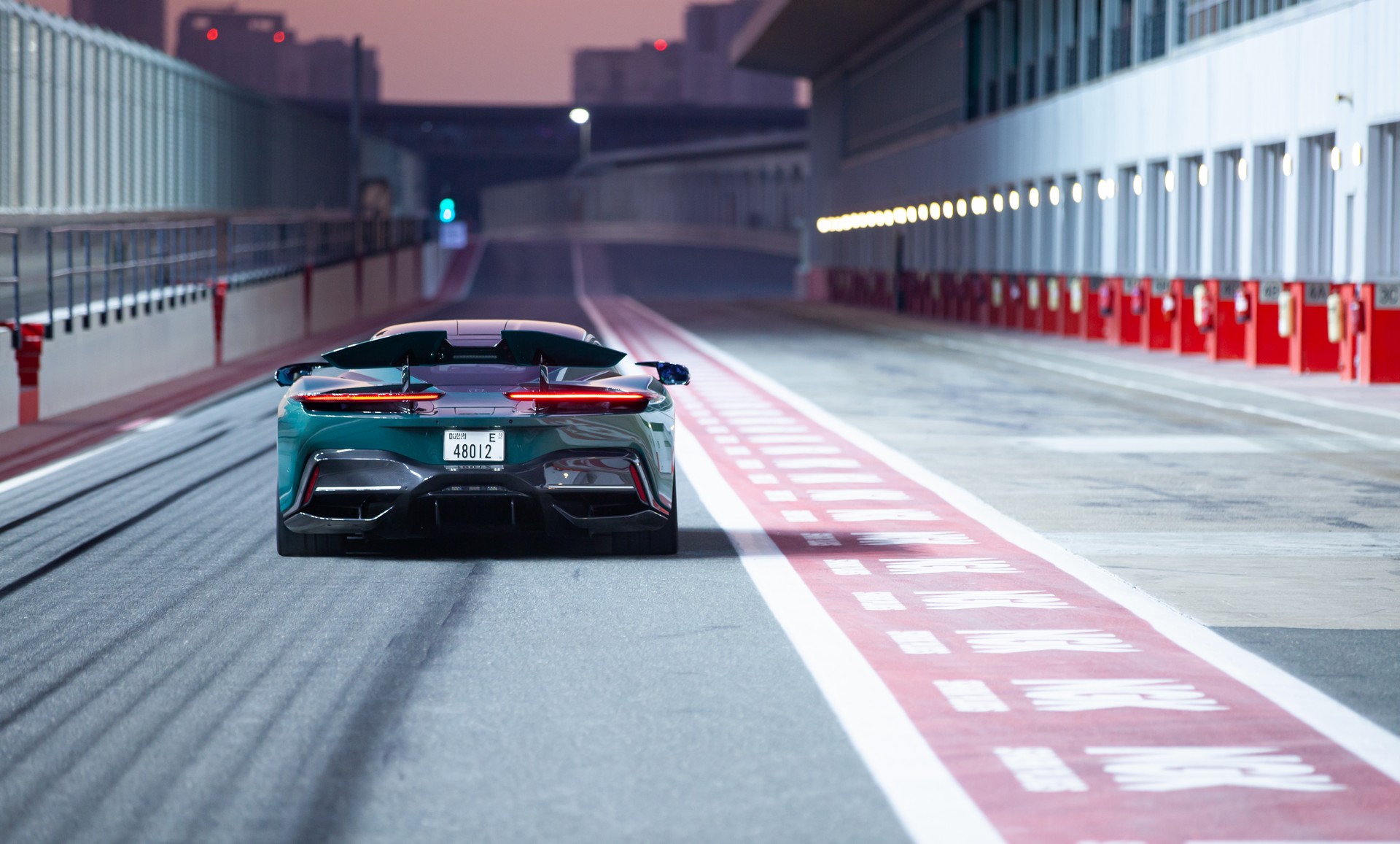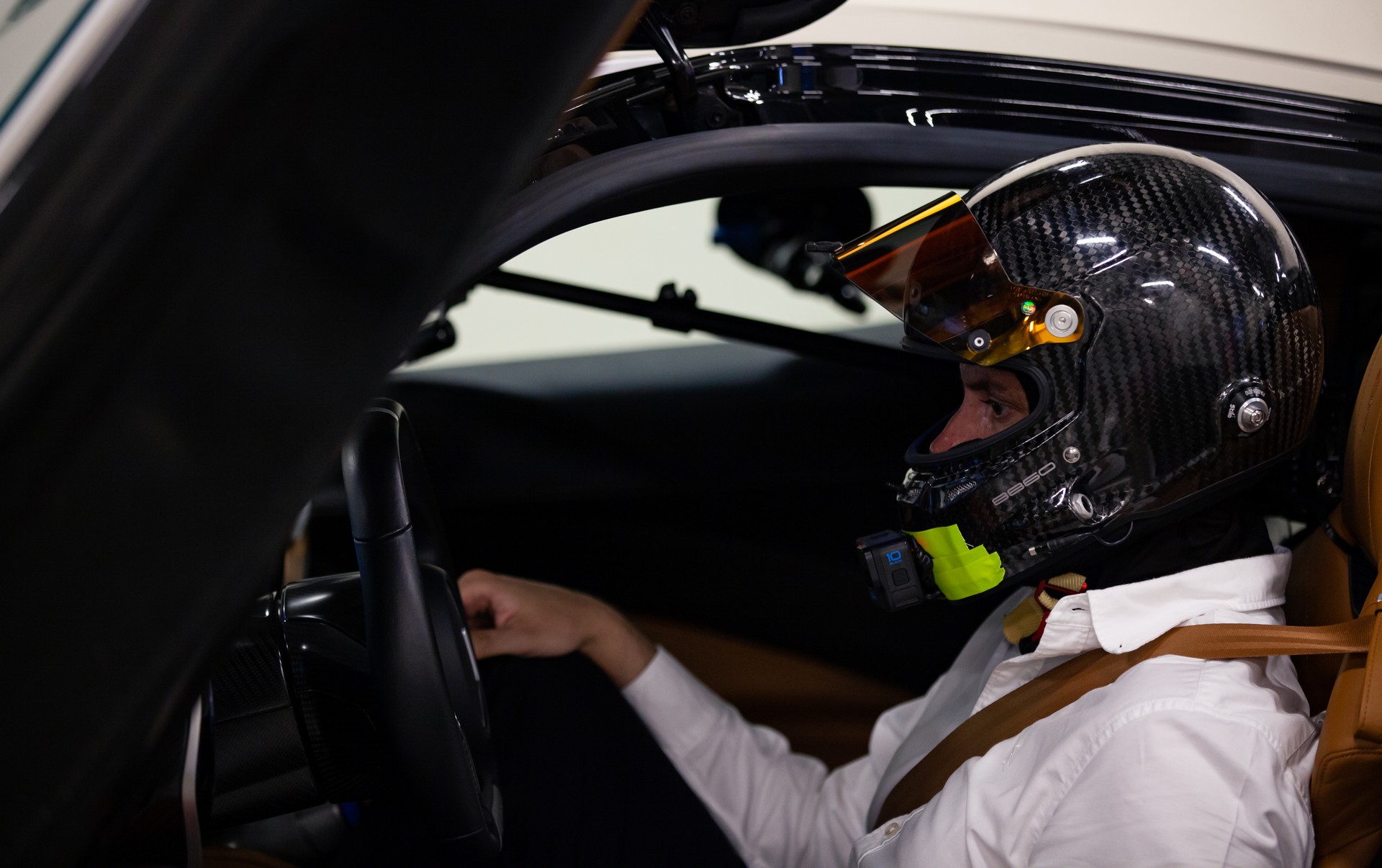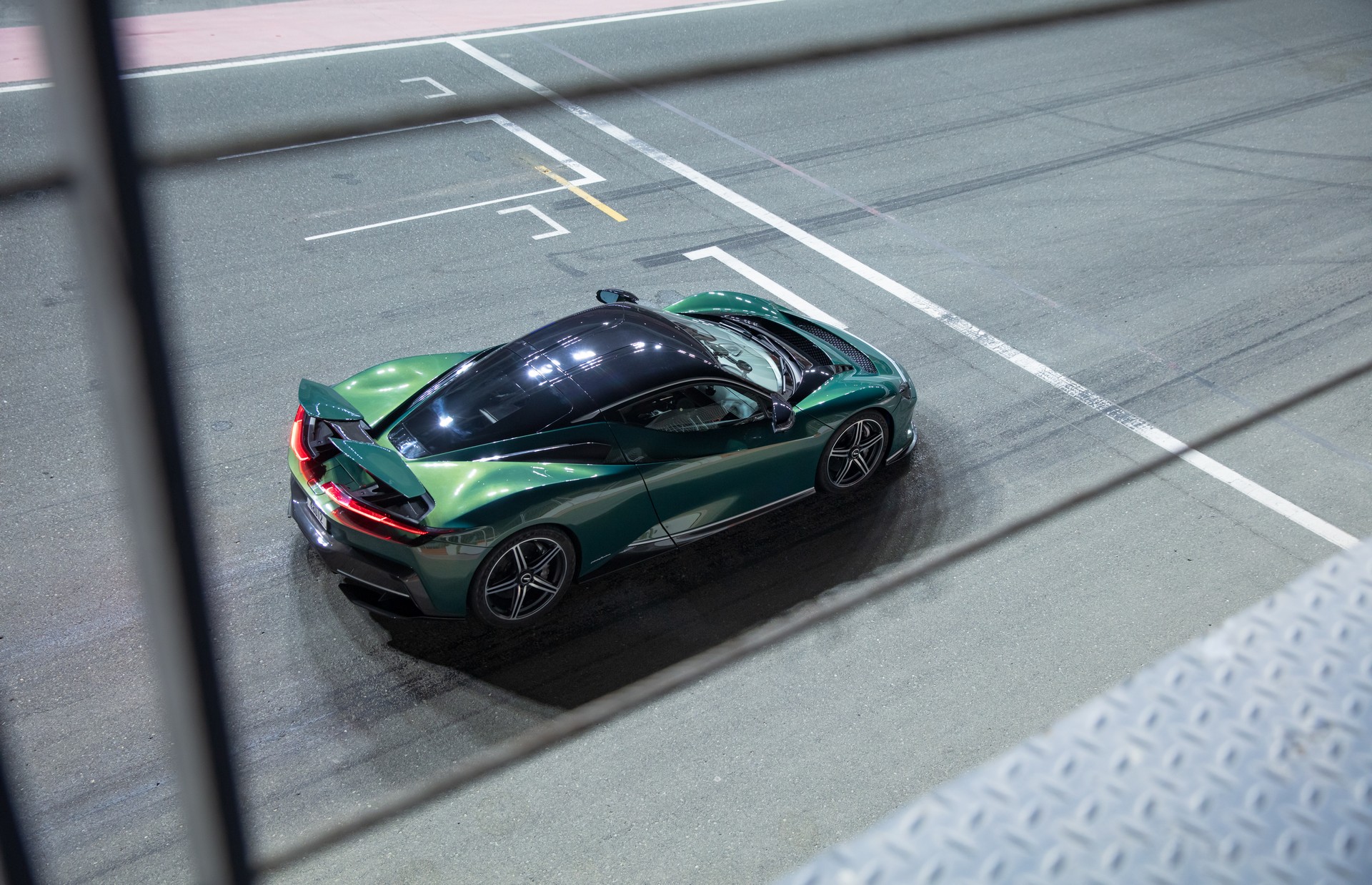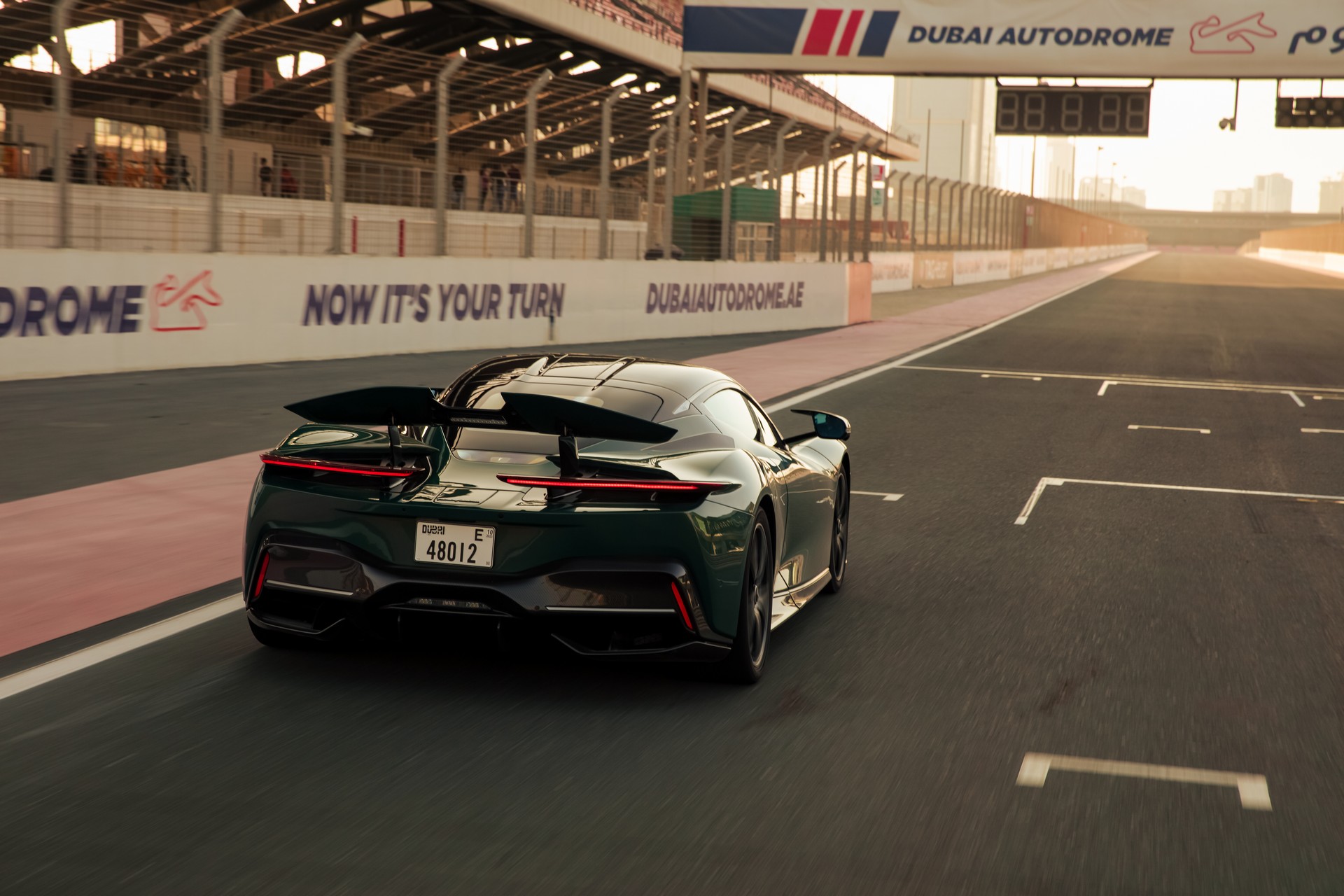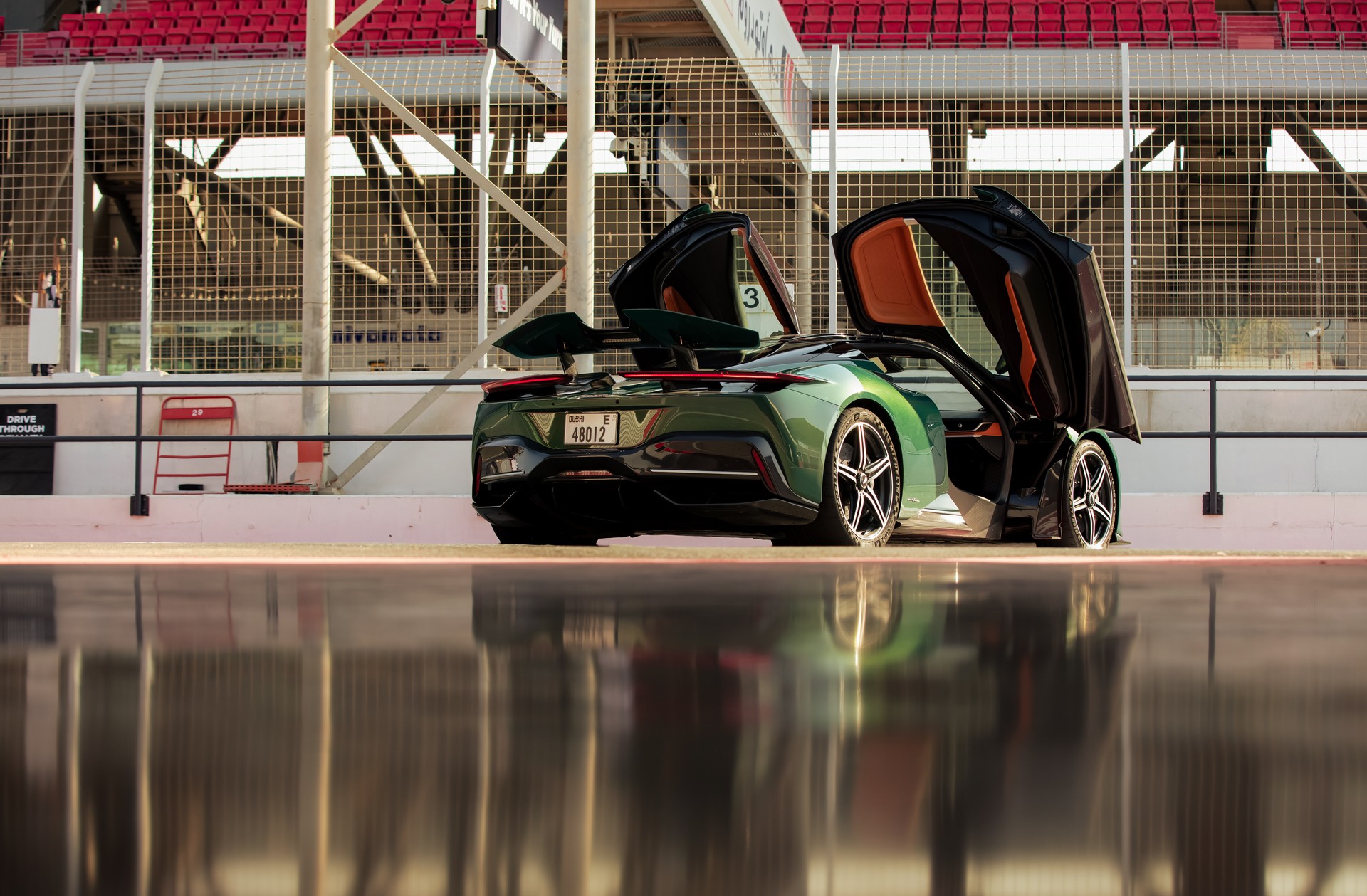The Pininfarina Battista has set multiple new acceleration records for a production car during its debut in the United Arab Emirates.
During testing at the Dubai Autodrome, the Battista achieved broke the record in the 0 to 60 mph (96 km/h), 100 km/h (62 mph), 120 mph (193 km/h), and 200 km/h (124 mph) sprints, showing just how extraordinary the Rimac-sourced electric powertrain really is.
Read: Discover How The Quad-Motor Pininfarina Battista Comes To Life
0-60 (0-96 km/h) took the Battista just 1.79 seconds while the sprint to 100 km/h (62 mph) was achieved in 1.86 seconds. In times gone by, the acceleration of EVs would begin to wane after 100 km/h. Not the case with the Pininfarina Battista. In fact, it went on to hit 120 mph (193 km/h) in 4.49 seconds and 200 km/h (124 mph) in just 4.79 seconds, making it slightly quicker than even a Formula 1 car.
The Battista also brakes just as well as it accelerates, so much so that it also set a record for the fastest-braking EV on earth, stopping from 100 km/h in just 31 meters (101.7 feet).
“I am proud that our new electric hyper GT delivers on the promises we made when we set out our development plan,” Automobili Pininfarina chief product and engineering officer Paolo Dellacha described. “In Battista, we have achieved performance beyond our original, extreme targets. Perfectly optimized weight distribution and low center of gravity are at the heart of this result. The combination of bespoke chassis and suspension tuning, tires proven over many thousands of test miles, and four-motor torque vectoring delivering unprecedented power enables Battista to be the fastest accelerating road-legal car in the world.”
Pininfarina’s performance tests of the Battista come shortly after Rimac set a new EV top speed record in the Nevera, hitting 256 mph (412 km/h). The Rimac-sourced electric motors of the Battista combine to produce an extraordinary 1,900 hp and 1,725 lb-ft (2,340 Nm) of torque. Making it even more impressive is that it can travel up to 296 miles (476 km) on a single charge, although this obviously falls dramatically when repeatedly launching the hypercar to 60 mph and beyond.



